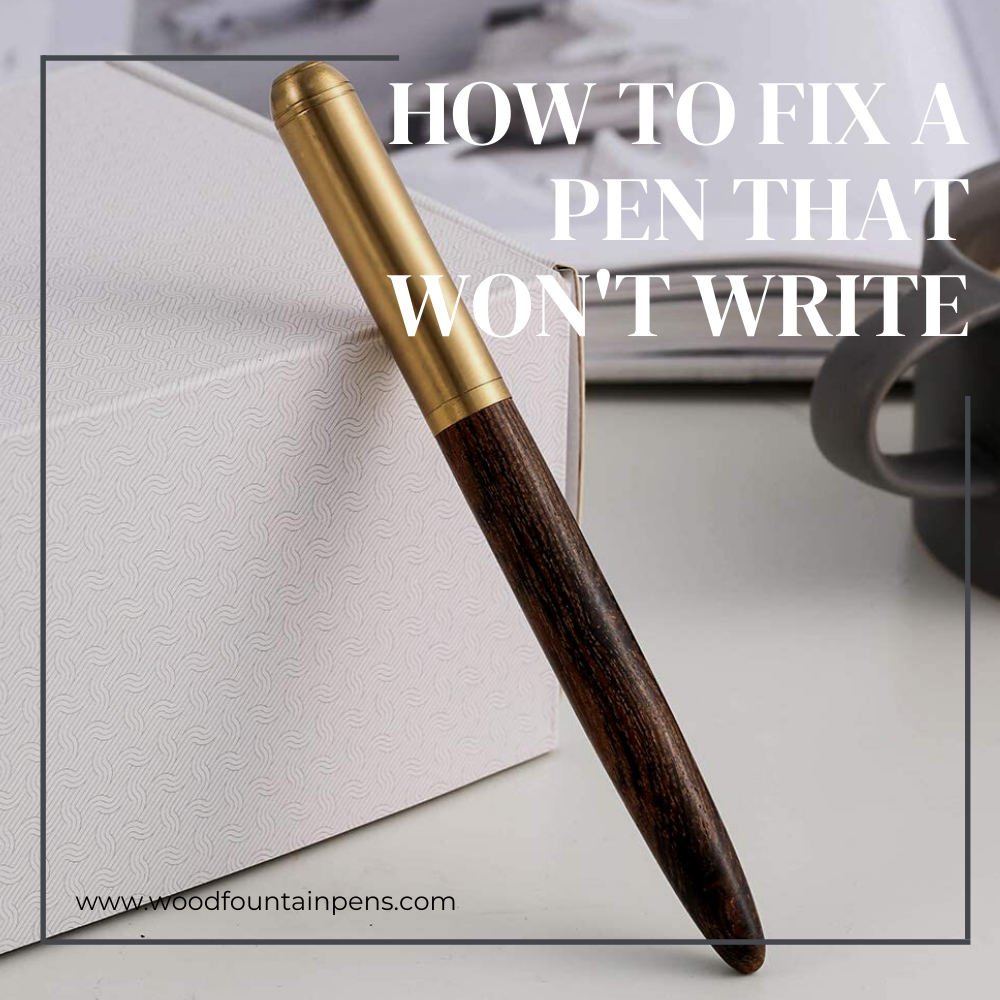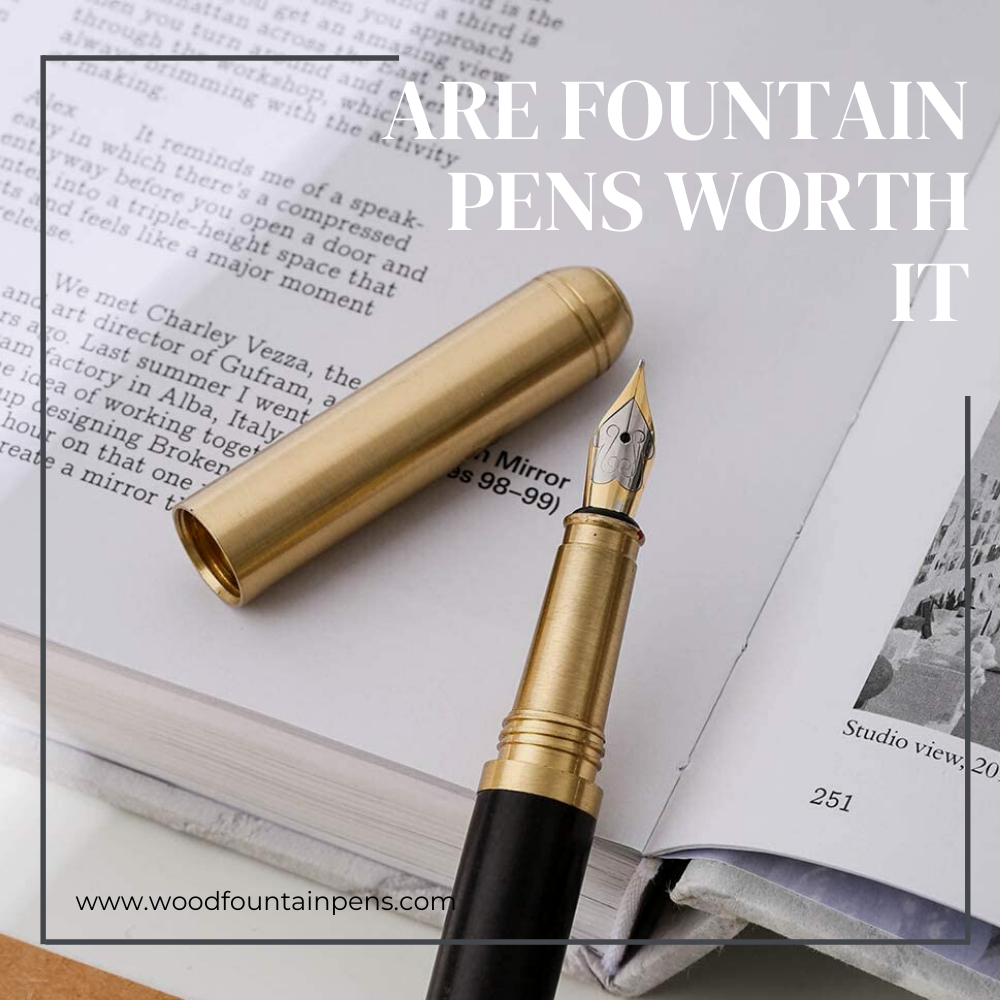
how to fix a pen that won't write
How To Fix A Pen That Won't Write?
how to fix a pen that won't write, If you need to use a pen every day, buying a new one isn't necessary. If your pen doesn't work, don't worry! But, what will you do?
If you need help fixing a pen that doesn’t write, read this post!
When trying to fix a pen that doesn’t want to write, there are two main strategies you could use: manually (by hand) or using some kind of tool.
There are basically four ways you can revive your pen without using any tools at all. Depending on the severity of your pencil’s problem, these strategies may be simple and effective.
Here are those strategies:
1. To fix a pen that won’t write, Scribble hard!
If you're stuck without any ink, the first thing you need to do is to scrawl furiously until you get some back again.
Most often than not, a pen doesn’t write because there isn’t enough liquid ink inside the barrel; and some hard inks contributes to this. If you write hard enough, the ink will come out.
2. Shaking the pen.
If a pen doesn't write properly, there may be an air gap between the tip and barrel. If the first technique didn't work, then try shaking the pen again. Remove the cartridge by pulling it out of its case and holding the other end of the pen next to the ink reservoir. Tap the cartridge against a hard surface like a tabletop.
Inking up will cause the ink to flow back into the reservoir. Make sure that you briefly check the progress every now and then. Don't touch the cartridge at all unless absolutely necessary because doing so might cause the nib to get damaged.
3. Apply air pressure.
To fix a pen that won’t write, these previous strategies didn't work for you, then there may be an issue with the ink flow. You could use air pressure here. In order for you to remove the pen tip from its ink reservoir, you must first carefully pry off the cap.
Next, blow into one side. This can be the fastest way to push the ink and eliminates the air gap.
It may not always go smoothly. If there’s too much air pressure, then the entire amount of ink might be ejected out . Control is key.
4. To fix a pen that won’t write, You must install the new refill.
Most often, ball point or gel pens are not reusable. Sometimes you fall in love with the beauty and elegance of your writing instrument. If that happens, you'll be tempted not to give up your pen.
In this case, installing a new refill might be your best option. It certainly solves the problem without losing your pen.
Between those four strategies
You've already learned some easy ways to get rid of ink stains from pens and pencils, but there may be times when they're not enough. These methods require no supplies at all except for some creative ideas.
There are other things that might be able to help you get your pen working again. However, these methods require certain supplies for the entire process.

Here's how to fix a pen that won't write using the following materials:
1. Write on your shoe.
Scribbling hard is the first option for most people. In order for this process to be successful, you need a piece of paper What if there isn't any paper available? If at any point during writing, the pen runs out of ink, you can always use the sole of your shoes as an alternative medium for writing.
A rubber shoe is an excellent choice. The rubberized surface traps down the dried ink. If there’s no time for anything else, then this might be your best bet.
2. Write on a rubber surface.
It’s similar to the first method but uses a different approach. There’s one big difference between these two types of surface — they need different surfaces. As long as it restores your pen, there’s no need for any particular kind of rubber.
3. Use a ziplock bag.
It isn't always easy removing old ink from the nib. You can remove ink stains from pens by putting them into a zip lock bag and submerging them in boiling water for 10 minutes.
Place the ballpen into the bag and close it up. Soak the bag in the boiling hot water for three to four seconds. At this point, the amount of heat required to dissolve the dried ink is high enough for most people to handle safely. Continue repeating the process until the pen starts writing.
4. Press the ink with a thin wire.
If none of these methods worked for you, then don’t give up just yet! There might be another way out. You should force the ink into the tip by pushing it through with a thin wire.
It can be difficult for cartridges with narrow holes to hold up under pressure. Finding a thin wire you can carry from your home is important but finding one that’s not too thick is even better. This may include a guitar string, etc. Find a wire that fits into the hole of the cartridge so that it doesn't get lost.
5. Heat up the cartridge using a microwave.
If you're having trouble writing with a particular pen, you may want to consider using one of these techniques instead. What you need is a microwave oven. Put the oven at its lowest setting and place the cartridge inside.
It requires continuous monitoring. You cannot leave the oven and do something else. You can burn the entire cartridge.
Check it momentarily. Once the cartridge has gotten warm, remove it from the oven.
6. Use a whiteboard marker on the tip of the pen.
Whiteboard markers' ink contains a solvent that will help dissolve the dried ink at the tip. If the problem is the hardening of the ink at the end of the pen, then using alcohol might help.
How to fix a pen that won't write?
These techniques are proven effective for achieving results. To determine which technique works best for any given pen, you must first assess its cause.
Each technique has its own strengths and weaknesses. In other words, no single technique works for every cause that hinders someone from using their pen properly.
In order to determine which strategy would be most effective for bringing your pen back to normal operation, you must first identify the cause of the problem. If the problem with your pen is due to an air gap between the tip and paper, then choose one of the solutions listed below. Combining different methods together may be one way to ensure that you find an effective solution for whatever issue you're facing.

Revive an old ballpoint pen by using three simple tricks.
You've probably had this experience before - when using a ballpoint pen that has sat unused for some time, sometimes they don't work anymore. Simply doesn't want to write. Scribbling doesn't help at all.
Don't worry, there are several easy ways you can fix your broken ballpoint pen.
USE HEAT
You can do this by using one of several different methods. They're all roughly equivalent. If using heat helps loosen up the dried ink around the pen’s nib, then use heat to help move the pen again.
Our favourite method is using a lighter. Just put the flame at the very tip for a few seconds. Mind not to touch the tip after!
It doesn't really matter which method you use to heat up your scalp; both methods produce similar results.
USE A SOLVENT
To fix a pen that won’t write, Solvents will help dissolve the ink so that everything flows smoothly. Nail polisher remover (with acetone) and rubbing alcohol both work wonders. Simply put a little onto some cotton wool and wrap around the tip for a few minutes. Write again!
FRICTION
The purpose of frantically scratching away at your paper until your pen runs out is so that friction acts on the ink stick and gets it going again. Some times, the friction of writing by hand just isn't good enough.
Try scribbling on the sole of a shoe or something made of rubber. Combining the increased friction and the stronger grip of the nib’s point on the paper will ensure that your pen is ready for use again.
Your pen may be out of ink. Try another one! Maybe it’s time for a different one.
How to Get a Pen Writing That Won't Write
If all your pens don’t write, there must be something wrong with them. You'll probably find out soon enough when they stop writing for good. Luckily for us, there are some things we can do to help our pen flow again.
A good way to get started is by writing down everything that comes into mind when thinking of the problem at hand. However, if you press too hard when using the pen, then the tip may break, causing damage to the device itself. If you don’t have any scraps to spare or if even though you scrawl away furiously, you just cannot seem to get ink to flow, then there may be something wrong with your pen nib.
Scribbling?
To fix a pen that won’t write and scribbling doesn’t work or if you don’t want to risk scribbling then you could always use centrifugal force. Holds the opposite end of the pencil and swings the writing end. The problem is, pencils don't last for too long and they're just too short to write anything longer than a few lines at once. If nothing else seems to be working for you, then you might want to hit some things hard enough to fix it.
In case everything else has failed, it’s time to be creative. Put the pen into hot water or use an iron to warm up the nib of the pen before starting to write. If you are in your car, turn up the blower and heat to full blast and jam the pen a little ways into a vent for about a minute. Put the pen under warm water if you're at home. You can even try breathing on the end of the tip with your breath a few times or putting it under your armpits, no matter how silly that may sound!

What if your pen is leaking?
We've talked so far about what to do if your fountain pen doesn't write and there isn't any ink flowing out of it. What about the opposite? When your fountain pen leaks ink, what should you do?
We first need to figure out where the extra ink is coming from. Wipe the pen using a clean piece of tissue to see which part of the pen transfers the ink color onto the paper.
Ink is on the grip section
Check the inside of the cap if there’s any ink on the grip section. Twist a piece of paper towel into a small ball shape and use it to clean the inside of the lid. When the ink has soaked into the paper completely, then there’s no longer any room for air bubbles between the surface of the pen and If that’s not the case, then you’ll need to make sure that both the nib and feed are properly installed into their respective sections.
If the nut and bolt aren't tightened down completely, they could be causing leaks. To ensure that housing is tight, grip the nib and turn it so that it's snug against the barrel.
In addition, the nib and feed fit snugly into the housing, so if there’s any doubt whether or not they’re fully inserted, grip the nib and feed and push them all the way into their respective housings.
A small amount of ink could be found inside the cap and near the grip section. However, if there were no signs of damage from any kind of impact, then it’s likely that the pen just released some ink when accidentally bumped into something. It’s not really a big deal. Sometimes, you'll find yourself writing something down without even realizing it.

Ink is coming from the barrel
If the ink is found between the grip section and the barrel, it could be an indication of a leak within the barrel itself. somehow, and you're using a cartridge/converters for a fountain pen, be sure to thoroughly inspect them before use and the connection is not tight enough so that there’s no gap between the pen tip and the paper, then you know that the seal has been broken. If you cannot get the connection tightened any further, see if you can loosen it slightly If not, replace either the converter or cartridge with another one.
and If ink is dripping out of the cartridge of a non-cartidge/converter pen when writing, then there’s something wrong with the pen itself. If there are any parts to be replaced, then you may need to talk to the manufacturer's warranty service repair dept.
Ink creeping into the nib is not something to worry about. It doesn't affect writing quality at all.

Here are some quick tips for fixing ink flow problems.
When using a fountain pen, be sure to cap it before putting it away. If you leave your pen uncapped for long periods of time, there’s a chance that it could clog up and not perform well when writing. If you leave an uncapped pen on top of a desk, it might roll off onto something like carpeting or wood flooring.
Like any type of fountain pen ink, there’s no guarantee that one brand of fountain pen ink won't harm another brand of fountain pens. In case you're having trouble keeping up with the pace of writing, switch out the pen for another one.
Paper quality matters too. Paper made from recycled paper has fewer fibers than regular paper; therefore, it’s less likely to clog up your pen. Try changing your paper for a different kind (or even color) of paper.
Hopefully this guide has helped you address some common fountain pen issues. If you're having trouble using your new fountain pen, contact the manufacturer or the store where you bought it for help. If we happen to be that retailer, please use our contact page to reach out.







Leave a comment
This site is protected by hCaptcha and the hCaptcha Privacy Policy and Terms of Service apply.